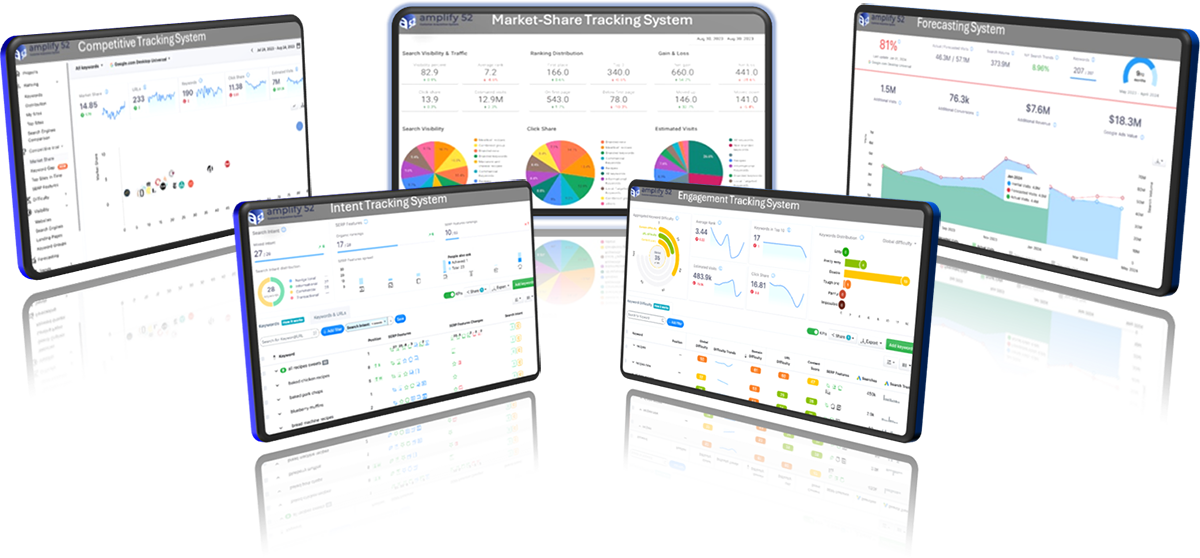Insights & Analytics
Customer reporting
The Role of Insights & Analytics in Digital Marketing
Insights and analytics serve as the backbone of modern digital marketing, enabling visibility into customer behavior, preferences, and trends. By analyzing data from various touchpoints such as websites, social media, search platforms (Google Gemini, Perplexity, ChatGPT, Grok, etc.) marketers can identify what resonates with their target audience and tailor strategies accordingly. The integration of insights and analytics into digital marketing strategies is no longer optional but essential. By leveraging AI technologies and combining SEO with GEO practices, businesses can stay ahead in the competitive digital landscape. Embracing a data-driven approach enables marketers to make informed decisions, personalize customer experiences, and drive sustainable growth.

Lead Conversion Process

Insights
Insights are actionable findings derived from analyzing marketing data. They reveal trends, customer preferences, and behaviors that can guide strategy adjustments.
This helps marketers understand the “why” behind the data, revealing what drives success or failure in campaigns.
Customer Behavior Trends: Understanding how users interact with your site, which pages are popular, and where they drop off.
Audience Segmentation: Insights into different customer segments help you tailor campaigns to target specific groups more effectively.
Channel Performance: Insights into which marketing channels (social, email, paid ads) are most effective for driving conversions.
Product Interest: Identifying which products or services attract the most interest and drive the highest conversions.

Digital Marketing Analytics
Analytics in digital marketing refers to the process of collecting, measuring, and analyzing data from various online marketing channels to assess the effectiveness of marketing strategies and campaigns.
Analytics helps you track user behavior, understand customer journeys, and evaluate the impact of campaigns to improve ROI.

KEY PERFORMANCE INDICATORS (KPIs)

AWARENESS KPIs
Impressions: The number of times an ad or post is displayed.
Reach: Unique users who saw your content or ad.
Brand Mentions and Share of Voice: Measures brand exposure and awareness compared to competitors.

ENGAGEMENT KPIs
Click-Through Rate (CTR): Percentage of users who clicked on a link in an ad or post.
Likes, Shares, Comments: Measures user interaction on social media posts.
Bounce Rate: Percentage of users who leave the website after viewing only one page.

LEAD GENERATION KPIs
Lead Conversion Rate: Percentage of website visitors who become leads by taking actions like filling out a form.
Cost per Lead (CPL): Average cost to acquire a lead.
Qualified Leads: Number of leads that fit the target customer profile (often segmented into Marketing Qualified Leads (MQLs) and Sales Qualified Leads (SQLs)).

CONVERSION KPIs
Conversion Rate: Percentage of users who completed the desired action, like making a purchase or signing up.
Cost per Acquisition (CPA): Average cost to acquire a paying customer.
Sales Revenue: Total revenue generated from digital marketing efforts.

USING ANALYTICS, INSIGHTS, AND KPIs TO OPTIMIZE CAMPAIGNS
To manage campaigns based on performance, strategy needs to be constantly fine-tuned based on the data that indicates social sentiment of those the campaign is attempting to engage. A few of the primary data-points are listed below:
Set Clear Goals: Define what success looks like for each campaign (e.g., increase leads, improve conversions) and choose relevant KPIs to track.
Data Collection and Tracking: Use analytics tools to track your KPIs across channels and campaigns.
Analyze Data Regularly: Regularly review metrics to identify what’s working and what isn’t. Look for trends, spikes, or drops in engagement, conversion, or traffic.
Generate Insights: Use the data to understand user behavior and uncover insights that highlight areas for improvement.
Adjust Campaigns Based on Insights: Update targeting, budget allocation, or content strategy based on insights. For example, if the CTR is high but conversions are low, consider optimizing the landing page.
A/B Testing: Test different variations of ads, emails, or landing pages to determine which performs best.
Benchmarking: Compare your KPIs to industry benchmarks or past campaign performance to gauge success.
Digital Marketing Insights & Analytics: Unlocking Data-Driven Growth
